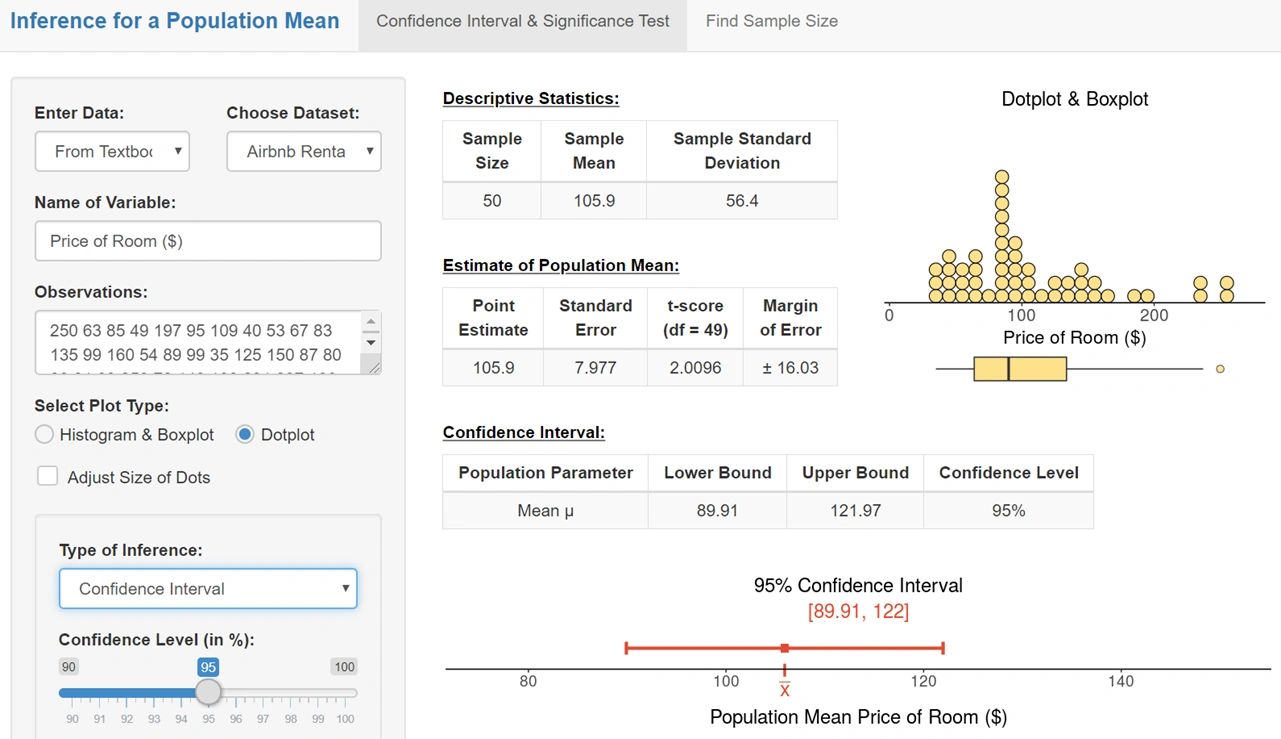New mobile app: Resampling (Bootstrap Confidence Intervals)

Art of Stat
Web Apps
Explore statistical concepts in an interactive way. Use the apps to construct graphs, obtain summary statistics, find probabilities, get confidence intervals or fit linear regression models. Take screenshots or download graphs of your data.
Exploratory Data Analysis
Association, Correlation & Regression
Association Between Two Categorical Variables (2x2 tables)
Association Between Two Categorical Variables (2x2 tables)
Association Between Two Categorical Variables (2x2 tables)
Construct 2 x 2 contingency tables, obtain conditional proportions and get a bar graph. Find the difference or ratio of proportions to describe the strength of the association. Built the sampling distribution of the difference or ratio via resampling.
Scatterplots & Correlation
Association Between Two Categorical Variables (2x2 tables)
Association Between Two Categorical Variables (2x2 tables)
Construct interactive scatterplots, hover over points, move them around (or remove them) and overlay a smooth trend line. Find the correlation coefficient r and see if it is robust to outliers. Built the sampling distribution of r via resampling.
Multiple Linear Regression
Multiple Linear Regression
Multiple Linear Regression
Exponential Regression
Multiple Linear Regression
Multiple Linear Regression
Logistic Regression
Multiple Linear Regression
Logistic Regression
Distributions: Explore Shapes & Find Probabilities
Art of Stat: Distributions
Art of Stat: Distributions
Art of Stat: Distributions
Sampling Distributions and the Central Limit Theorem
Sampling Distribution of the Sample Proportion
Sampling Distribution of the Sample Mean (Continuous Population)
Sampling Distribution of the Sample Mean (Continuous Population)
Experience how the sampling distribution of the sample proportion builds up one sample at a time. Use sliders to explore the shape of the sampling distribution as the sample size n increases, or as the population proportion p changes. Overlay a normal distribution to explore the Central Limit Theorem.
Sampling Distribution of the Sample Mean (Continuous Population)
Sampling Distribution of the Sample Mean (Continuous Population)
Sampling Distribution of the Sample Mean (Continuous Population)
Experience how the sampling distribution of the sample mean builds up one sample at a time. Use a variety of real or theoretical continuous population distributions (or create your own) to draw samples from. Move sliders to explore when the Central Limit Theorem kicks in.
Sampling Distribution of the Sample Mean (Discrete Population)
Sampling Distribution of the Sample Mean (Continuous Population)
Experience how the sampling distribution of the sample mean builds up one sample at a time. Use a variety of real or theoretical discrete population distributions (or create your own) to draw samples from. Move sliders to explore when the Central Limit Theorem kicks in.
Confidence Intervals & Significance Tests (One Sample)
Confidence Intervals & Tests Comparing Two Groups
Difference & Ratio of Proportions
Difference & Ratio of Proportions
Difference & Ratio of Proportions
Find the bootstrap or permutation distribution for the difference or ratio of two proportions, or for the odds-ratio. Use these to obtain percentile confidence intervals or permutation P-values for testing whether there is no association.
Inference for Comparing Several Groups
Kruskal-Wallis Test
Under Construction



